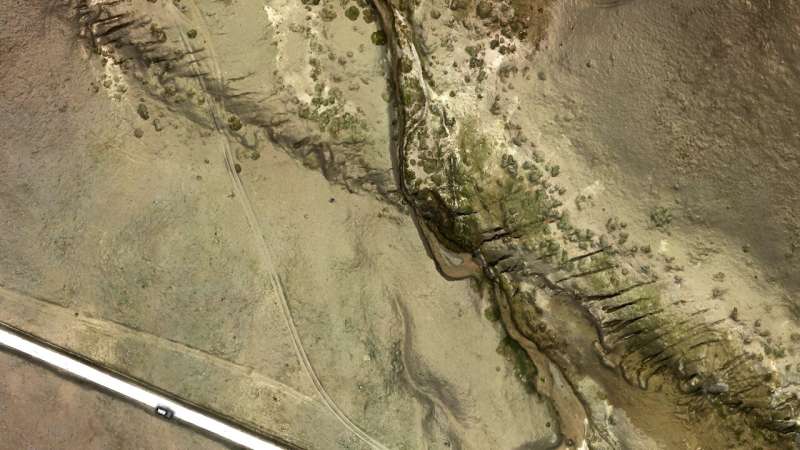This article has been reviewed according to Science X's editorial process and policies. Editors have highlighted the following attributes while ensuring the content's credibility:
fact-checked
peer-reviewed publication
proofread
Fault maturity or orientation: Which matters more for quakes?

In the early morning of 22 May 2021, a magnitude 7.4 quake rattled China's remote Maduo County on the Tibetan Plateau. It was the most recent in a series of nine earthquakes with a magnitude of 7 or greater since 1997, and its surface rupture was twice as long as the global average for similarly sized quakes. The tremor occurred on the eastern part of the relatively immature left-lateral Jiangcuo fault system, which slips slowly, about 1 millimeter per year, and was unmapped before the quake.
Uncovering the geological dynamics of this disaster could help inform future efforts to assess seismic hazards in the region and around the world. In a new report published in AGU Advances, Jing Liu-Zeng and colleagues analyze the Maduo quake to probe the relationship between fault structure and earthquake dynamics.
To do so, the researchers combined field observations with satellite images taken prequake and postquake as well as with centimeter-resolution photos taken of the fault system by an unmanned aerial vehicle. These remote sensing techniques enabled them to analyze fractures that would otherwise be inaccessible because of their high altitude and harsh surrounding environment.
The research team assessed changes to Earth's surface both on and near the fault segments involved in the quake. The segments had varying orientations with respect to the overall regional patterns of seismic stress, as well as varying degrees of maturity. Maturity is not necessarily synonymous with age; rather, it indicates the degree of a segment's development, or how much it has changed with time and activity.
Prior research has highlighted the importance of fault maturity in earthquake dynamics. However, in the case of the Maduo quake, the researchers found that the faults' orientations played a larger role in the magnitude and the degree of localization of surface deformation than their maturity levels. These findings suggest that future seismic hazard assessments might be enhanced by more thoroughly accounting for fault segment orientation in the context of regional stress conditions.
More information: Jing Liu‐Zeng et al, Fault Orientation Trumps Fault Maturity in Controlling Coseismic Rupture Characteristics of the 2021 Maduo Earthquake, AGU Advances (2024). DOI: 10.1029/2023AV001134
Journal information: AGU Advances
Provided by American Geophysical Union
This story is republished courtesy of Eos, hosted by the American Geophysical Union. Read the original story here.




















